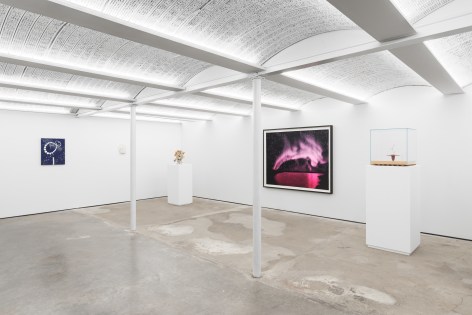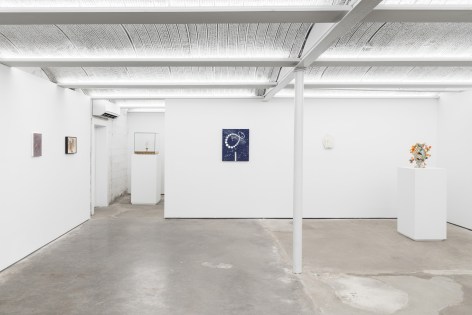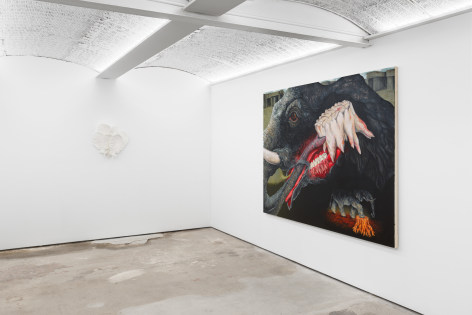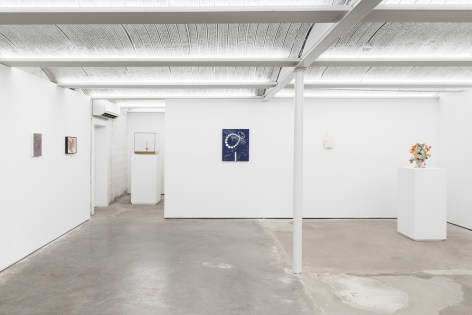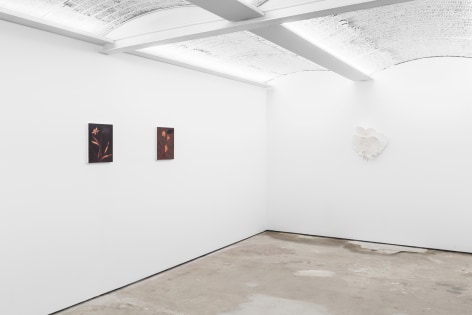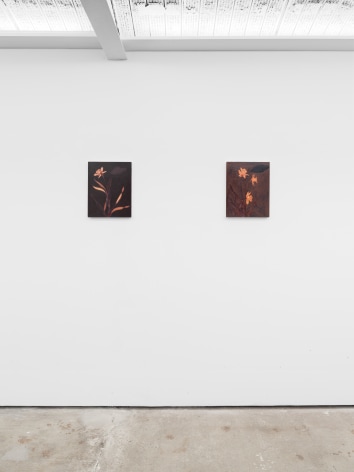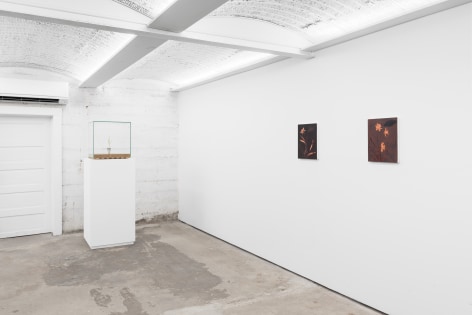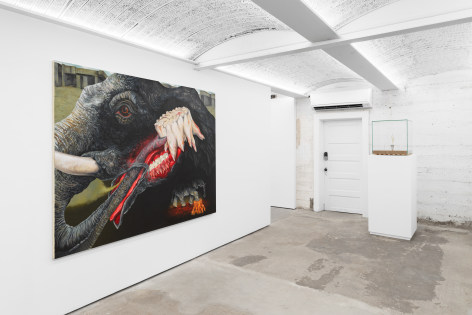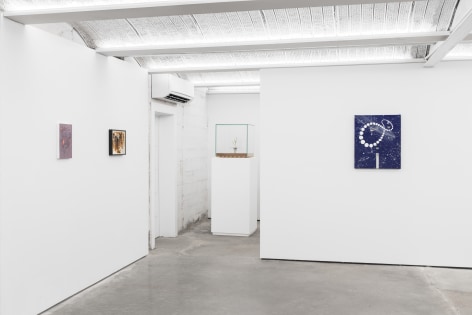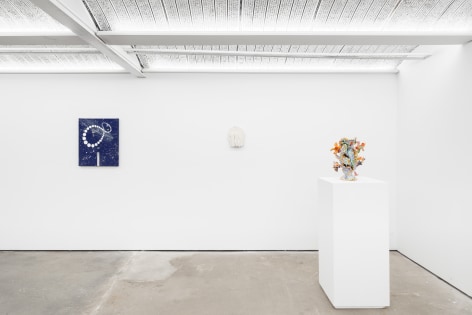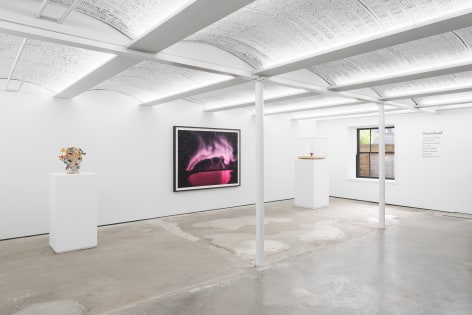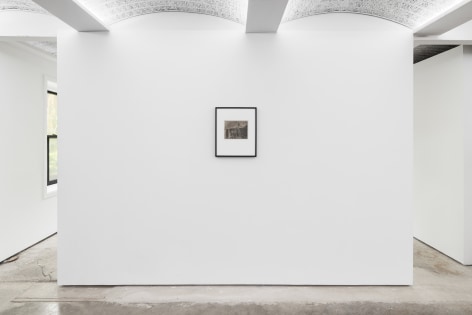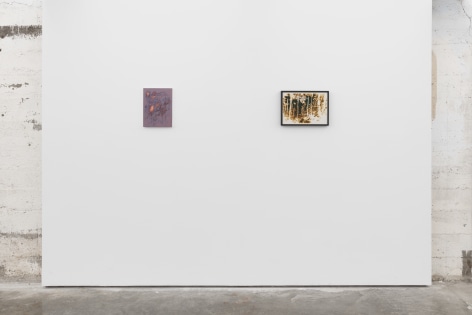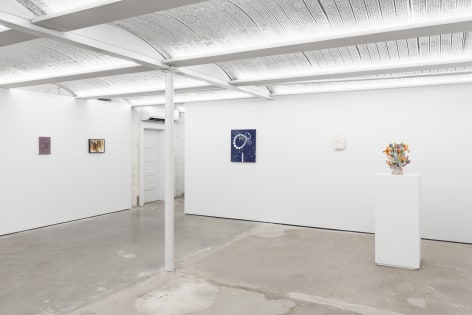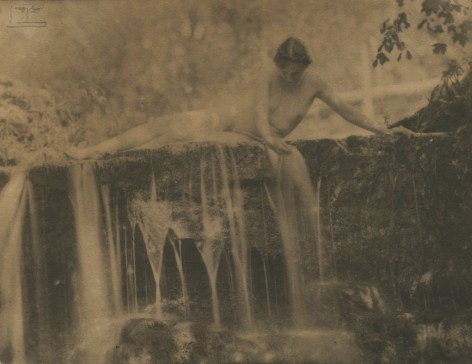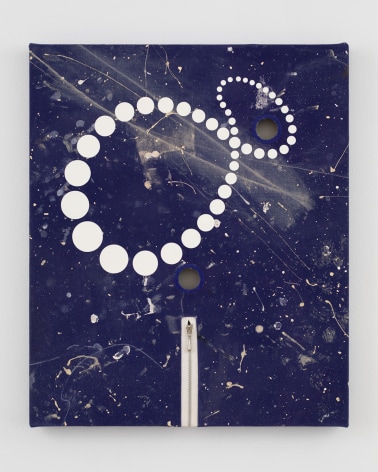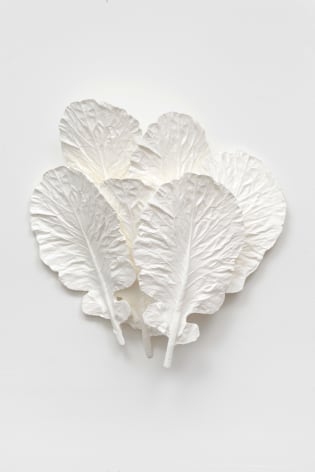Alexander Gray Associates, Germantown presents Groundswell, a group exhibition bringing together historical and contemporary works from an intergenerational group of artists who use landscape to suggest alternate, yet familiar worlds. Featuring work by LaKela Brown, Teresita Fernández, Anders Hamilton, Kat Lyons, Donald Moffett, Katie Stout, Alexandria Tarver, and Eva Watson-Schütze, the show spotlights paintings, sculptures, and photographs that blur boundaries between the existent and the fictional. Approaching contemporary landscape as caught in a delicate equilibrium between ruin and regeneration, Groundswell finds beauty amidst the precarity of our current global environmental and sociopolitical moment.
Central to this presentation, Eva Watson-Schütze’s ethereal early twentieth-century photograph, Nude Woman on a Rock (1904), speaks to past perceptions of the natural world. One of the founding members of the Byrdcliffe Arts Colony, the artist created this image in Woodstock, NY. Reflective of the colony’s founding utopian principles, this evocative image transforms the landscape of the Hudson Valley into an otherworldly backdrop for mythical figures.
In opposition to its mythic and picturesque qualities, in recent years the environment has emerged as a significant site of conflict. Along these lines, Teresita Fernández examines the landscape as a space where the physical and social meet—where the aggression and violence of imperialism and the disenfranchisement and resistance of the colonized color reality. Collaging together an ashen tropical landscape, Yucatán (Burned) 1 (2023) elicits contemplation on the destructive, yet regenerative powers of environmental practices. In parallel, Donald Moffett takes both the cosmos and the canvas as a surface of incision. Long recognized for embedding social, political and sexual issues in his work, Moffett’s Lot 021007/20 (OO, night loop) (2007/2020) goes beyond mere abstraction to include references to the natural world—emblematically assaulted, yet radiant.
Meanwhile, Kat Lyons’s large-scale canvases examine the complexities of animal life to question the nature of human categorization and understanding. “I’m interested in how we relate to animals as both physical and symbolic capital and how those relationships shape their world,” Lyons explains. In compositions such as Root (2024), her animal subjects transcend anthropocentric realities by traversing various planes of existence, challenging normative frameworks of perception.
In contrast, Anders Hamilton and Alexandria Tarver’s works meditate on landscapes mediated by urbanity. Working in Brooklyn, Hamilton intervenes within natural phenomena. In sculptures like Obelisk (Auxin) (2023), he entombs the ashes of twigs, leaves, and flowers collected from around his studio in clay. Likewise, Tarver's process begins on evening walks around New York City. These forays are when she discovers small floral scenes, which she photographs before translating them into paint—an act that transposes the blooms into a landscape sited at the juncture of memory, idealization, and presence.
LaKela Brown and Katie Stout craft sculptures from flora that references personal and collective histories. Coopting the iconography of bouquets, Brown’s monochromatic arrangements of vegetables and fruit present the landscape as a witness to diaspora and displacement. Works like African/American Bouquet with Six Collard Green Leaves (Upright) (2024) assert a migratory and still under-historicized Black American culinary tradition and identity that has indelibly shaped the land. Like Brown, Stout’s work also mines the history of horticultural display. Her dynamic, vase-like vessel synthesizes centuries of art history, borrowing from the visual lexicon of Rococo decorative arts, as well as modernist biomorphic sculpture. Stout’s exuberant display of gilded floral abundance—a burgeoning micro-landscape—reflects her interest in meditating on the ephemerality of the natural world. As a result, the sculpture emerges, in the artist’s words, as a “strong metaphor for life, death, and sexuality.”
Groundswell offers an expansive view of landscape as a genre that meaningfully intersects with political realities—past, present, and future. Considering the environment as both alien to and entangled with human existence, the works on view chart manifold paths through the complicated nature of their surroundings.

